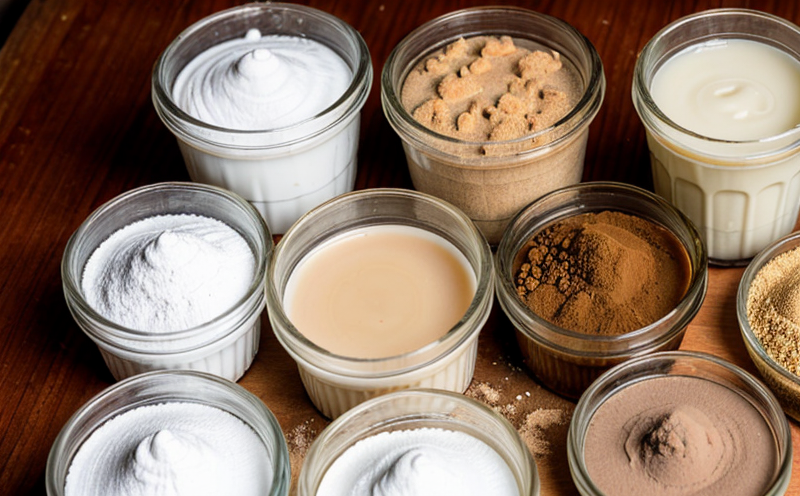FDA BAM Chapter 18 Yeast and Mold Enumeration in Food Samples
The FDA Bacteriological Analytical Manual (BAM) Chapter 18 is widely recognized as a comprehensive guide for the enumeration of yeast and mold in food samples. This method, which is both rigorous and specific, plays a crucial role in ensuring product safety and compliance with regulatory standards.
Yeast and mold are natural microorganisms that can be found in various types of foods. Their presence may indicate spoilage or potential contamination, posing risks to public health. Therefore, accurate enumeration and identification are essential for food producers and regulators alike. The BAM Chapter 18 method offers a standardized approach, ensuring consistency across laboratories.
The process typically involves the following steps:
- Sample collection: Proper sampling is critical to obtaining representative data.
- Preparation: Samples must be prepared according to specific protocols to ensure accurate enumeration.
- Culture and incubation: Yeast and mold colonies are grown on appropriate media, which allows for their identification and quantification.
- Enumeration: The number of yeast and mold colonies is counted using a microscope or other suitable counting device. This step requires careful observation and adherence to strict protocols.
The method's robustness lies in its ability to provide reliable results under controlled conditions, which are essential for maintaining product quality and safety. Compliance with this method ensures that food products meet the stringent requirements set by regulatory bodies like the FDA.
By using the BAM Chapter 18 method, laboratories can provide accurate and consistent data, enhancing trust in the food industry’s commitment to quality and safety. This method is particularly beneficial for companies involved in manufacturing, distribution, and quality assurance, as it helps them maintain compliance with regulatory standards and ensure product integrity.
The BAM Chapter 18 method also supports research and development efforts by providing a standardized approach for studying yeast and mold growth under various conditions. This standardization allows researchers to compare results across different studies, fostering advancements in the field of food safety and quality.
For compliance officers and quality managers, adherence to this method ensures that their organization meets regulatory requirements, thereby reducing the risk of legal action and enhancing consumer confidence. In addition, the method's reliability contributes to maintaining a positive reputation for the company’s products and services.
Applied Standards
The FDA BAM Chapter 18 Yeast and Mold Enumeration in Food Samples is based on the FDA Bacteriological Analytical Manual (BAM), which provides a series of methods for the microbiological examination of food. This chapter specifically focuses on yeast and mold enumeration, offering detailed procedures for sample preparation, culture media formulations, incubation conditions, and counting techniques.
The method is closely aligned with international standards such as ISO 6803:2017, which provides guidelines for the determination of yeast in fermented beverages. The alignment between these standards ensures that laboratories can achieve consistent results across different regions and regulatory frameworks.
The BAM Chapter 18 method is not only used by food manufacturers but also by academic institutions, research organizations, and governmental agencies. Its widespread adoption reflects its reliability and accuracy in microbiological analysis. By adhering to this method, laboratories can ensure that their findings are consistent with international norms and best practices.
Customer Impact and Satisfaction
Enhanced product safety: By accurately identifying yeast and mold species, laboratories ensure that food products meet strict regulatory standards.
Improved reputation: Consistent compliance with the BAM Chapter 18 method enhances a company’s reputation for quality and reliability.
Reduced risk of contamination: Accurate enumeration helps in detecting potential sources of contamination early, minimizing the risk of product recalls.
Increased consumer trust: Transparent adherence to industry standards fosters trust among consumers, leading to increased brand loyalty.
Customer satisfaction is a priority for our laboratory. By providing accurate and timely results, we help ensure that food products are safe and compliant with international standards.
International Acceptance and Recognition
The BAM Chapter 18 method is widely accepted in the global food safety industry due to its reliability and consistency. Regulatory bodies worldwide recognize this method as a standard for yeast and mold enumeration, ensuring that results are universally accepted.
Many countries incorporate the BAM Chapter 18 method into their own national standards, further emphasizing its importance in the international community. This widespread recognition ensures that food producers can conduct consistent testing across different regions, promoting global trade and collaboration.





